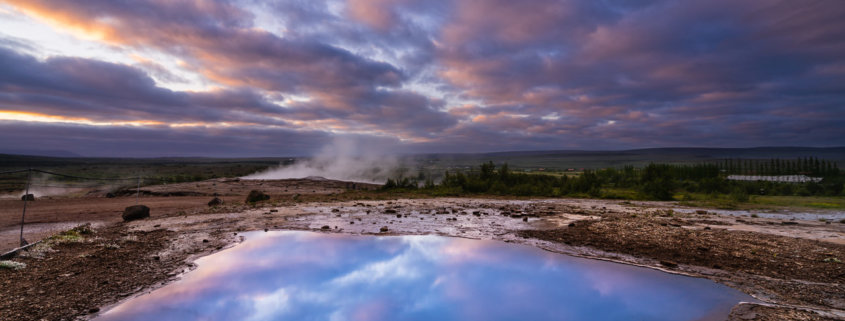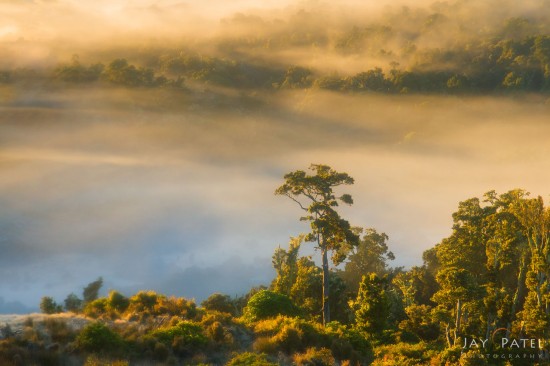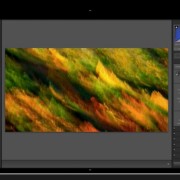Common Lightroom Mistakes that Beginners should Avoid
Lightroom is a go to choice for most beginner landscape photographers. However Lightroom is a complicated post processing software platform with lots of bells and whistles. So it should come as no surprise that beginners run into problems when using Lightroom to process their landscape photos.
Post processing in landscape photography in Lightroom is a highly personal process. We all have our likes and dislikes, best workflow for our photos and more. But there are some things that are often overlooked, pushed too far, or not pushed far enough, resulting in landscape photos that don’t look like nature, or prints that disappoint. If you are new to landscape photography, here are a few common post processing mistakes that you should avoid to take your photos to the next level:
#1: Not removing Chromatic Aberration
Without getting too technical, I’ll simplify it by saying that chromatic aberration has to do with your camera lens and the color of light traveling through it. Chromatic aberration in landscape photography shows up primarily in areas of high contrast. If it goes unnoticed, and therefore not corrected in Lightroom, you may find yourself with a big lovely print with horrible purple, red, green, or blue edges around objects that shouldn’t have colors like that.
The original landscape photo above appears just fine, but on closer inspection, there is horrible chromatic aberration showing up on the wood fence where the dark wood meets the white snow behind it. This is the most likely place you’ll see chromatic aberration in Lightroom photography, areas where dark objects meet light backgrounds or the sky. You will have to zoom in at 200% in Lightroom to see chromatic aberration in your landscape photos. The good news is that it’s a very simple fix in Lightroom or Adobe Camera RAW converter. So make sure that you look for chromatic aberration and correct them in Lightroom. Last thing you want is to spend time working on that gorgeous image only to see this horrible color fringing show up on a fine art print.
#2: Using wrong amount of Contrast
Contrast is an extremely important post processing variable in landscape photography. Adding right contrast in Lightroom can bring out an incredible amount of detail in your landscape photos. However, using an indiscriminate amount of global contrast adjustment in Lightroom is usually counter productive for landscape photography. This is especially true if your photos already have high contrast situations like sunrises or sunsets.
Similarly not using enough contrast in a landscape photography can make a photo look flat, lifeless, and unappealing. When it comes to adjusting contrast in landscape photography, I rarely use the global contrast slider in Lightroom. Instead I rely on shadows, highlights, blacks, and whites sliders in Lightroom to adjust contrast in different parts of my landscape photos.
#3: Applying too much saturation in Lightroom
One of the most common post processing mistakes in Lightroom made by beginner landscape photographers can be as simple as taking the saturation slider and moving it too far to the right. This is also an issue when working with High Dynamic Range (HDR) landscape photos. Over saturated landscape photography is a touchy subject as everyone’s idea of “ideal” saturation is different. Do what makes you happy, but just be aware that pushing the saturation slider in Lightroom too far can make colors look fake and create harsh transitions from rather than smooth gradients. If I’ve worked on an landscape photo for a while, I’ll walk away and come back to it with fresh eyes and sometimes I realize I’ve pushed my colors a bit too far.
I will often time use exposure bracketing in the field to capture a high dynamic range scene. However I do nor rely solely on HDR tools in Lightroom to blend these images into a final finished landscape photo. Whenever it is possible, I will often use only one camera exposure and bring out the details in highlights and in shadows in Lightroom without creating an HDR. I find that this Lightroom workflow creates more realistic landscape photos that are pleasant to the masses.
When working with HDR photos in Lightroom, just remember that in nature, the sky is almost always brighter than the foreground at sunrise and sunset. Making the foreground brighter than the sky in post just looks unnatural and unappealing.
#4: Overuse of the Dehaze post slider in Lightroom
When the Dehaze slider was introduced in Lightroom, landscape photographers were super excited about its capabilities. However, sometimes beginners get a little over zealous when it comes to the Dehaze slider in Lightroom and do things we normally wouldn’t…like pushing that dehaze post processing adjustment too far. One of the biggest drawbacks of a dehaze slider is that it will darken the overall look of the landscape photo. It is easy for you to lose details in your shadows when you push the dehaze slider to far to the right.
Another reason to ease up on dehaze sliders for landscape photography is when you have fog in your photo. The mood created by a foggy landscape photo may be lost with aggressive use of a dehaze adjustment in Lightroom. If you want a moody, foggy image, stay away from dehaze.
#5: Too much post processing can result in noisy images
I have a basic landscape photography rule that I live by: Photograph at the lowest ISO setting possible for the circumstances. I’m almost always at ISO 100 except for night photography and wildlife photography when I am trying to freeze the motion of my subject. But even at ISO 100, if you make extreme exposure correction to brighten up the shadows in Lightroom your landscape photos too far, it can result in noisy images. This noise due to aggressive post processing appears can be easily seen in flat dark regions of the image.
In the photos above extreme exposure adjustment in Lightroom to brighten the shadows have resulted in a noisy landscape photo. If I truly wanted the dark areas to be this bright, I’d be better off using the exposure bracketing to capture the scene. I can then rely on HDR tools in Lightroom to brighten up the shadows without introducing noise in my landscape photo. Post processing noise is introduced when brightening the shadows and not when darkening them. Just be careful and watch those shadows.
#6: Ignoring an Obvious Color Cast
The color of the sky, clouds and surrounding elements will affect the color of the objects in your landscape photo. A sunny day may produce a neutral or blueish tint in the photo. This tint is readily noticeable when photographing bright white subjects such as the snow. In landscape photography your white waterfall can have green color cast if it’s surrounded by trees. Light is bouncing off of everything around you and sometimes it will cause colors to show up where there really shouldn’t be any. When you do see unwanted color cast in your landscape photos you should try to correct it in Lightroom.
Not all color cast is undesirable in landscape photography. After all, at sunrise and sunset we should have a nice warm glow on everything. However dealing with color cast is a personal choice. The image above was photographed in the shade on a clear blue sky day and if you didn’t pay attention, you probably wouldn’t notice that the white boats are in fact blue! I just used the white balance dropper in Lightroom to do a color cast correction. It warmed the image quite a bit and removed the color cast from the boats. Making this photo any more warmer would have made the blues in the sky look unnatural. Once you learn about local adjustment in Lightroom, you can use the brush tool to selectively remove color cast from different parts of your landscape photo.
Here is a short video from Kate Silvia that shows you common post processing mistakes in Lightroom and how to avoid them:
Post processing for landscape photography in Lightroom is a highly personal process and often no right or wrong answer. However you should be aware of some of the pitfalls of post processing and should try to avoid them in future. This will allow you to bring your stunning details, rich contrast and vibrant colors in your landscape photos. After all, you worked hard for them!




















Kate, Glad to see the published article. I’ve found the information extremely helpful in my editing. Thanks for producing the article
So glad you found it helpful Richard! :) Have an awesome week!